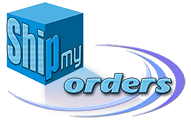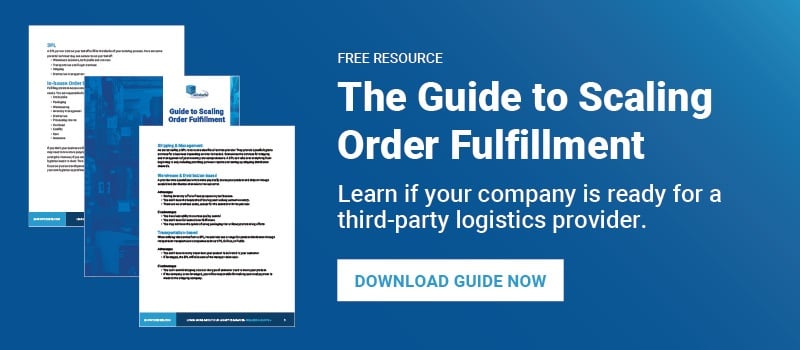
Business owners who decide to use third-party logistics providers (3PLs) for their fulfillment – or in other words manage some or all of their supply chain – will need a way to measure their performance. 3PLs manage the logistics of a supply chain, providing everything from warehousing to transportation and many other areas of supply chain management. However, finding one that can keep up with your business needs can be a challenge. In this article, we will take a closer look at how you can measure KPIs for 3PLs to find one that can help you achieve your business goals.
How to Manage 3PL Performance
Managing your 3PL’s performance can be tricky when you’re first establishing a relationship together. Let’s take a look at some potential problems and offer some tips on how to mitigate them.
Designate one point of contact with your 3PL
It is wise to designate a senior employee, ideally a manager or owner experienced with the supply chain of your organization, as the single point of contact with your 3PL. You can then request that your 3PL designate someone on their end who will deal only with your chosen representative. This will reduce the problem of having “too many cooks in the kitchen” and eliminate many communication issues that can arise. Your appointed contact person should have the necessary decision-making capabilities for speedy problem resolution.
Set clear expectations from the start
Because you are entering into a partnership with your fulfillment provider, you must set your expectations clearly at the beginning and do your best to stick to them. Define exactly how issues are resolved right from the start. You may find it useful to utilize Key Performance Indicators (KPI) to assist in setting your expectations. This will also help your 3PL know whether they are meeting your needs or have areas for improvement and will mitigate lengthy discussions on success versus failure.
Set up formal performance review periods
It is helpful to lay out periodic, formal performance review periods that allow both you and your 3PL to examine the KPIs you outlined (as described above) and adjust your performance standards as needed. You might also find this step useful to create progress reports if your organization is quite large.
Keep the lines of communication open
Your 3PL is essentially your business partner, so it’s important to inform them of any product or organizational changes that might affect the relationship. Even large organizations could easily lose sight of this and miss out on opportunities by assuming their partner “already knows” what’s going on. Open communication will solve many problems down the road and also make your 3PL a more effective partner.
Establish an escalation process
The best way to ensure a smooth relationship up front is to design a formal escalation procedure and stick to it. You may wish to maintain a chart showing this process. Because 3PLs can have issues ranging from quality control to costs to customer demands, if an issue is not satisfactorily resolved it will prove helpful to chart a path and keep track of these trends to improve future resolutions in whatever area the issue(s) may originate.
3PL KPIs to Track
There are many important KPIs you will wish to track when setting up your relationship with a 3PL, and we’ll take a closer look at those here. You will want to add these to your service agreement or Quarterly Business Review (QBR). Keep in mind that not all of these will apply to your organization, depending on what level of services you’re requesting from your 3PL. On the other hand, there may be some not on this list you might want to add to your tracking list. This is an important area to consider and revise based on your organization’s size, product line, level of service, and many other factors.
- Customer-Service Satisfaction Rate
- Prompt Communication
- Turnaround Time to the Customer
- Quality Control/Quality Assurance
- Hours/Days of Operation
- Distance/Time to Delivery
- Safety Record
- Cost-Reduction Goals
- Customer Reviews
- Fuel-Surcharge Management (FSC)
Tips on 3PL Supplier Relationship Management
Creating the proper foundation for your 3PL relationship will go a long way toward determining success. By using the steps shown below, you will have a much better chance of achieving the success both you and your 3PL desire.
- Start slowly and proceed methodically: Take the time to research different 3PL providers before signing any contract. Be sure you understand what a 3PL will do for you and why it makes sense for your organization.
- Determine the desired cost and service: Know what you want and what you want to pay for it. Know your benchmarks and baseline of both cost and service before you sign a contract.
- Clearly state your requirements: Clearly state your requirements and any special customer needs up front and make sure your 3PL has a clear understanding of them. Poorly written Requests for Proposal (RFP) can doom your relationship from the start.
- Let your 3PL in: One method for companies to best explain their business to a 3PL is to literally let them in the door. Allow a representative to have a look inside your business. Let them ask questions and collect information. They need to understand your business almost as well as you do to succeed, so don’t be afraid to give them a close look.
- Established desired outcomes: You are looking into outsourcing because something within your supply chain isn’t working. Make sure your 3PL understands the gaps they need to fill within your organization and that they fully understand your desired outcomes.
- Ensure your interests align: Documentation is key – be sure to document everything that will fulfill your desired outcome. This step should outline communication and collaboration. This will also allow you to identify risks.
- Use Incentives: Include incentives used in the pricing model to reward the 3PL when targets are achieved. These might include number of products moved or a certain level of customer satisfaction. This should all be laid out in the beginning.
- Monitor and manage: While you clearly don’t want to micromanage your fulfillment provider, neither should you turn a blind eye to what’s going on. Create a sound governance structure outlining expectations.
Related: How to Improve the Order Fulfillment Process
Selecting a Third-Party Logistics firm can be a daunting task. The time and cost associated with it may even prove too much for some companies, depending on their size and needs. However, using the tips outlined above, you can minimize the pain associated with it and find the 3PL that’s right for you. Ship My Orders is a leading 3PL company that, unlike other 3PLs, combines industry expertise with cutting-edge technology to provide tailored logistics solutions, ensuring your business operations run smoothly and efficiently. Request a free quote today.


-1.png)


